@msbt @timconsidine I wonder whether Strapi might be a suitable candidate for your app-installer, until Cloudron officially supports it?
LoudLemur
Posts
-
Strapi - Open source Node.js Headless CMS to easily build customisable APIs -
Strapi - Open source Node.js Headless CMS to easily build customisable APIsHere is another update on what has improved in Strapi since v5.14.0.
Main Improvements in Strapi v5.14.0 to v5.31.3
Strapi v5 has seen significant evolution from v5.14.0 to v5.31.3 (released December 3, 2025), with a focus on AI-powered features, internationalization (i18n) enhancements, UI/UX polish, and robust bug fixes. These updates span roughly mid-2025 to late 2025, emphasizing developer productivity, content management workflows, and accessibility. Below is a categorized summary of the key improvements, aggregated from release notes. This highlights user-facing changes while grouping similar updates for brevity.
New Features
- AI Translations: Automatically translate content across locales on save, including dynamic zones and blocks—eliminating manual copy/paste workflows and enabling seamless global content sync.
- File-Type Restrictions for Uploads: Enforce specific MIME types for media uploads to improve security and compliance (v5.31.0).
- AI-Generated Image Metadata: Automatically generate and attach metadata to AI-created images in the media library (v5.27.0).
- Homepage Customization: Allow admins to personalize the admin panel homepage with custom widgets and layouts (v5.28.0).
- Rich-Text Link Attributes: Add extra attributes (e.g., target, rel) to JSON blocks in rich-text editors for better SEO and accessibility (v5.30.0).
- Responsive Navigation: Full mobile-optimized sidenav with improved scrolling and subnav responsiveness (v5.27.0).
- Media Library Accessibility: Added ARIA-selected states and click handlers for keyboard navigation in asset selection modals (v5.31.1).
Enhancements & UI/UX Improvements
- AI Chat Optimizations: Auto-open AI chat on relevant actions, cache tokens in memory for faster responses, and add loading indicators for i18n tasks (v5.30.0–v5.30.1).
- Locale Management UX: Improved combobox for adding locales, alphabetical sorting in pickers, and prefill non-translatable fields from default locales (v5.30.1–v5.31.1).
- Component Replacements: Swapped legacy
singleselectwith moderncomboboxcomponents for better search and selection UX across forms (v5.30.1). - Upgrade Tool Enhancements: Better detection of package registry URLs during migrations, with clearer prompts and flag handling (v5.31.1).
- Cookie Security Config: Expanded options for secure, same-site, and domain-specific cookie handling in auth flows (v5.28.0).
- Plugin Generators: Streamlined scaffolding for custom plugins with improved templates and i18n support (v5.30.1).
- NPS Survey Responsiveness: Made feedback surveys mobile-friendly with better layout and interaction handling (v5.30.1).
i18n & Localization Improvements
- Locale-Specific Handling: Fixed bulk unpublish/create to target only selected locales; added "Available In" column behaviors and query param support for
locale=*pagination (v5.30.1–v5.31.1). - Relation & Field Sync: Prevent unnecessary triggers for non-translatable content; populate media fields per locale and include locales in "last modified" widgets (v5.30.0–v5.31.1).
- Picker & Tooltip Fixes: Alphabetical ordering, full locale visibility, and working tooltips for i18n fields; avoid marking published content as modified during queries (v5.29.0–v5.30.0).
- Fill-from-Other-Locale: Resolved empty component creation issues and ensured proper prefill for new entries (v5.29.0–v5.30.1).
- Translation Keys: Added Vietnamese, French, Portuguese-BR, and Japanese-English keys; globalized bulk-move modals and email templates (multiple releases).
Bug Fixes
- Content Manager Stability: Fixed edit-view form triggers (e.g., Enter key), unsaved data warnings on page close, and field preservation (
visible: false) on submit (v5.31.1–v5.31.3). - i18n Workflow Issues: Resolved flickering on i18n fields, double "go back" buttons, pagination counts, and relation counts from locale-aware documents (v5.30.0–v5.31.1).
- Media & Upload: Prevented broken breadcrumbs in deep folders, disabled edit buttons on disabled inputs, and fixed ordering/selection resets (v5.28.0–v5.29.0).
- Admin Panel Reliability: Stopped admins from self-deletion, fixed list jumps on checkbox selection, and enforced max length on short text fields (v5.30.1–v5.31.1).
- API & Query Fixes: Improved GraphQL scope inheritance, CORS customization, and TypeScript errors in Document API (e.g.,
documentIdas field value) (v5.31.1). - Form & Input Handling: Added optional chaining for retention days, cleared time-only fields properly, and prevented iOS zoom on focus (v5.30.0–v5.31.1).
- Bulk Actions: Disabled states now prevent execution; fixed non-unique keys in dynamic zone menus (v5.29.0–v5.31.1).
Performance & Security Updates
- Dependency Bumps: Updated Cloudinary (1.41.0 → 2.7.0), tar-fs (2.1.1 → 2.1.4), axios, form-data, sha.js, and brace-expansion for security and compatibility (v5.28.0–v5.31.1).
- Cache & Query Optimizations: Invalidate document cache post-publish; use query engine for i18n to avoid unnecessary modifications (v5.29.0–v5.30.0).
- Node.js Support: Added official Node 24 compatibility with testing utilities like
setupDatabaseReset(v5.31.0). - CSP & Encryption: Extended Content Security Policy configs; replaced deprecated
Buffer.slice()withsubarray()(v5.30.0–v5.31.3). - License Gating: Disabled AI features for non-Growth licenses by default; isolated AI APIs to EE folder (v5.31.1–v5.31.3).
Documentation & Other Changes
- Translation & Testing: Updated admin UI translations (e.g., French, pt-BR); replaced deprecated testing APIs like
act()with testing-library standards (multiple). - Build & CI Fixes: Improved local docs builds, Husky setup scripts, and release commit flags (v5.30.1–v5.31.3).
- Deprecation Handling: Reverted unstable AI-localization flags; cleaned up component-join tables for published relations (v5.30.0).
- Accessibility Tweaks: Enhanced keyboard nav in Content-Type Builder and responsive left menu (v5.29.0–v5.31.1).
Overall, this period marks Strapi's push toward AI-driven content workflows and polished i18n, making it more suitable for global, multi-locale sites. For full details, check the GitHub releases. Upgrading? Review breaking changes in the official docs.
-
Gramps.js/Web -
Webtrees - Web based family history softwareWebtrees was a great suggestion for genealogy way back then and today it stands as the most active and fully featured project amongst its contenders. Here is a quick ai summary:
Strongest Fully Featured Alternative with Most Active Development
Based on the latest metrics as of December 7, 2025, Webtrees stands out as the strongest fully featured open-source genealogy program among the alternatives (Ancestris, Webtrees, GeneWeb, and Genea.app), particularly when prioritizing both comprehensive features and the highest level of ongoing development effort. Here's a quick rationale, followed by a comparison update incorporating fresh data.
Why Webtrees?
- Fully Featured: It rivals Gramps in depth, supporting full GEDCOM import/export for seamless data migration, advanced editing (individuals, families, sources, media like photos/documents), privacy controls, interactive charts/maps, and real-time collaboration—making it ideal for both solo researchers and shared family projects. Unlike lighter tools, it handles large trees with database-backed storage and media merging during updates.
- Most Work Happening: It shows the highest momentum with 676 stars, 332 forks, and over 20,777 total commits on GitHub. The last commit was just yesterday (December 6, 2025), with frequent updates in late 2025 (e.g., PHP 8.5 compatibility fixes and translation enhancements in November/December). This indicates a vibrant, multi-contributor ecosystem (historically 100+), far outpacing the others in visible activity and community engagement.
- Edge Over Others: While Ancestris is a close second for desktop users (recent v13 release on Nov 30, 2025, with 1,200+ commits in 18 months), its SVN-based development lacks the transparent, high-velocity GitHub metrics of Webtrees. GeneWeb is steady but dated in interface and metrics (363 stars, no recent commit details). Genea.app lags with minimal activity (245 stars, sparse updates).
If you prefer a pure desktop experience like Gramps, Ancestris is nearly as robust and actively maintained—but for overall strength and dev hustle, Webtrees wins.
Updated Comparison Table (Dev Effort Focus)
Alternative Fully Featured Highlights Dev Metrics (Dec 2025) Activity Level Webtrees GEDCOM/media/editing/privacy/collaboration/charts 676 stars, 332 forks, 20,777 commits; last commit Dec 6, 2025; daily updates Highest: Frequent commits, broad contributor base Ancestris 30+ tools (editors/trees/maps/analysis); modular/GEDCOM v13 release Nov 30, 2025; 1,200+ commits (18 mo.); daily v14 builds via SVN High: Steady releases, community forums GeneWeb Database mgmt/conversion/plugins; web/offline 363 stars, 111 forks, 9,894 commits; active mailing list Moderate: Consistent but slower pace Genea.app Visual GEDCOM editing/Git sync; serverless 245 stars, 56 forks; limited recent commits Low: Small team, infrequent updates For setup, Webtrees is self-hosted (easy with Docker) and free forever. Dive in via GitHub or site. If this doesn't fit, clarify your priorities (e.g., desktop vs. web)!
-
Zulip - Powerful open source group chat@scooke There is a relatively new (and strange) restriction on "open source" community edition rocketchat: only 25 users. Sessions are restricted, too.
-
Zulip - Powerful open source group chatI was sure that Cloudron had started supporting Zulip. I looked for it and was surprised that it is still not there.
Improvements have been considerable since the original request. Lets support Zulip!
Based on the search results, here are the main advances in Zulip since March 2018 categorized by client and server improvements:
Server Improvements
Performance & Scalability (2018-2025)
- Reworked message feed rendering with improved client-side caching for instant rendering of recently visited views
- Optimized presence synchronization protocol using dramatically less network/CPU resources in large organizations
- Squashed almost 700 database migrations to optimize new database creation runtime
- Improved performance of creating channels with thousands of initial subscribers
- Replaced
pipwithuvfor better dependency management - Implemented
typed_endpointabstraction backed by Pydantic v2 for improved performance and readability
Security & Privacy (2020-2025)
- Added end-to-end encryption (E2EE) for mobile push notifications
- Hardened message-fetching code path against access control bugs
- Added server-to-server Zoom integration with better security
- Improved LDAP integration with better user role synchronization
- Added data export features with member consent controls
- Fixed multiple CVEs including authentication bypass and channel permission issues
File Management (2021-2025)
- Added TUS chunked-upload protocol support for arbitrarily large files
- Increased default MAX_FILE_UPLOAD_SIZE from 25MB to 100MB+
- Added support for HEIC and TIFF image thumbnails
- Improved video previews with better play button experience
Administration & Management (2019-2025)
- Channel archiving now preserves names and content access (with unarchiving support)
- Group-based permissions system with granular channel controls
- SCIM integration for user synchronization
- Custom welcome messages for new users
- Automated mobile push notification service registration
- Improved user role management and permission systems
Client Improvements
User Interface (2020-2025)
- Channel folders for organizing team channels
- Recent topics view for channel overview
- Improved left sidebar with search filters and unread count controls
- Cleaner image/video thumbnail layouts
- Enhanced message composition with better destination visualization
- Modernized settings UI with minimal, clean design
Messaging Experience (2019-2025)
- Message reminders functionality
- Support for channels without topics
- Bulk message management (mark as read for muted topics)
- Improved search with better operators and filters
- Pasting large text now convertible to uploaded files
- Read receipts and user status/availability
Mobile App (2021-2025)
- Complete rewrite with modern architecture
- Added search, status, read receipts, and sharing features
- End-to-end encrypted push notifications
- Autocomplete for user group mentions
- Broader TeX math support
Integration Ecosystem (2018-2025)
- Added integrations with OpenProject, OpenSearch, Airbyte, Onyx
- Improved GitHub, GitLab, Jotform, Linear, NewRelic integrations
- Removed deprecated integrations (OpsBeat, Desk.com)
- Enhanced SAML and Microsoft Entra ID authentication
The platform has evolved from a basic chat system to a comprehensive team collaboration platform with enterprise-grade security, scalability, and user experience improvements across all clients.
-
AI attempt at packaging anythingllm - problem with using demoEver hopeful, we thought it would be fun to try and one-shot a cloudron package of anythingllm using Grok.
We created a repo on cloudron's demo site (slick looking new GUI, by the way) using Gogs.
Now we want to find the install from custom source but can't see how. Could anybody show how to do it / Screenshot?

-
AnythingLLM - AI business intelligence toolAnythingLLM has had enormous improvements since it was first requested by @TheMoodBoardz
In particular, support for agents and RAG has been advanced to try and keep up with the huge demand in this area.Installing AnythingLLM on GNU+Linux now automatically installs Ollama, too.
Here is a summary of the main advances. If you want to make RAG and ai agents easier, AnythingLLM would be a great application to support.
Comparison between v1.0Based.0 and v1.9.0 of AnythingLLM, here are the most significant changes categorized into key areas:
Agent System Overhaul
- Complete redesign of the agent experience with real-time streaming tool calls
- Agents can now download and ingest web files (PDF, Excel, CSV) during conversations
- All providers and models support agentic streaming capabilities
Local LLM Integration
- Added Microsoft Foundry Local integration for Windows/MacOS (free local LLM solution)
- Linux now includes Ollama (0.11.4) built-in for immediate local LLM support
- ARM64 support for both Linux and Windows platforms
Platform & Infrastructure
- Expanded Linux support with automatic apparmor rules and .desktop file creation
- NVIDIA NIM being phased out in favor of newer solutions
- Upgraded core Electron version for improved stability
UI/UX Improvements
- Model swap capability during chats (Ctrl/Cmd+Shift+L)
- Workspace and thread searching in sidebar
- System prompt version tracking and restoration
- Enhanced mobile support with Android beta app
Developer Features
- MCP (Model Context Protocol) compatibility
- No-code AI agent builder
- Enhanced API endpoints and developer tools
- Multi-modal support for both open and closed-source LLMs
Internationalization
- Added Portuguese and Estonian translations
- Improved multi-language OCR support
- Expanded localization coverage
The update represents a massive leap from the initial version, transforming from a basic document chat system to a comprehensive AI agent platform with robust local operation capabilities and extensive customization options.
-
OpenStreetMap on Cloudronthanks to @timconsidine, we have facilmaps available on Cloudron, which is fantastic, but lets get our 70TB monster zoom maps going!
-
Transitous - Public Transport Routinghttps://github.com/public-transport/transitous/
This project might be useful with some others Cloudron supports.
-
BTCpayserverWhat is the latest news on official support for BTCpayserver on Cloudron?
-
BookWyrm - an ActivityPub alternative to GoodReads@jdaviescoates made a great request here and very early in the BookWyrm's development. A lot has improved since then. Here is an ai generated summary. Lets support BookWyrm on Cloudron!
Bookwyrm Improvements: v0.0.1 to v0.8.0
Core Features
- Introduced user export and import functionality, with files now saved to
/exportsin local storage by default, and automatic deletion of import files post-completion. - Updated minimum Postgres version to 14 (17 preferred) and Django to 5.2 for enhanced core stability and compatibility.
- Added management command to merge works, improving data handling for book entries.
- Added dates to RSS feeds and sorted them by most recent first for better content delivery.
User Interface/UX
- Display "no rating" instead of blank stars for reviews without ratings, improving visual clarity.
- Use translated shelf names in notifications for shelving other editions, enhancing multilingual support.
- Retain subjects and authors in the new book form even if validation fails, reducing user frustration during input.
Social/Community Features
- Show all reports (not just open ones) when linked from user admin, aiding moderation.
- Fixed federation issues with GoToSocial and inconsistent KeyId in headers, improving interoperability.
Book Management
- Optimized get_audience function by fetching only IDs, streamlining book-related queries.
- Enabled merging of works via a new management command for cleaner book database management.
Performance/Optimization
- Optimized get_audience by only fetching IDs to reduce query overhead.
- Increased default file upload limit to 100MiB, configurable via
MAX_UPLOAD_MiBin.env.
Bug Fixes
- Fixed federation with GoToSocial and inconsistent KeyId in headers.
- Retained subjects and authors when new book form fails validation.
- Updated nginx config requirements, including new location blocks for static files and access restrictions to
/images/.
Security/Privacy
- Included important security fixes in v0.8.0, with warnings to manually delete publicly available user export files (
.gz) fromimagesdirectories and S3 storage. - Changed default
DEBUGtofalsefor production security; assumed HTTPS unlessDOMAIN=localhost. - Added optional S3 support for export files via new env variables like
USE_S3_FOR_EXPORTS=true, with separate credentials for isolation. - Deprecated
USE_HTTPSand enforced HTTPS in production to prevent HTTP URLs in user/object IDs. - Added nginx config to block access to non-image files in
/images/with 403 responses.
Documentation/Setup
- Introduced
NGINX_SETUPenv variable (values:reverse-proxyorhttps, defaults tohttps) for better proxy and dev environment handling. - Updated default
PORTto 443 (or 80 for localhost) if unset, differing from previous 1333 default. - Provided detailed upgrade instructions for all environments, including Docker steps like
docker compose down, database version upgrade to Postgres 17, and rebuilding with Django 5.2. - Required manual nginx config updates in v0.7.2 for static file handling and security blocks.
Other
- Enabled optional S3 storage for exports with new env variables like
EXPORTS_S3_CUSTOM_DOMAINandEXPORTS_STORAGE_BUCKET_NAME. - Encouraged deletion of legacy export files in S3, especially for Backblaze (B2) or Cloudflare (R2) due to potential unsecured buckets.
- Introduced user export and import functionality, with files now saved to
-
Ladybird - a new, independent web-browserIt doesn't use code from any of the existing web-browsers.
-
Travel Dashboard on Cloudron - Live UK train and tube status dashboardI tried creating the above post using AI. The formatting wasn't beautiful, so I retried with AI, asking it to improve the formatting. It didn't get much better.
I shall tidy it up later but am leaving it here for a while so you can see how it looks.
-
Travel Dashboard on Cloudron - Live UK train and tube status dashboardMain Page: https://github.com/HenryPenton/train_dashboard
*- Git: https://github.com/HenryPenton/train_dashboard
- Licence: MIT
- Dockerfile: Yes (pre-built Docker images available)
- Demo: N/A
-
- Summary: A full-stack application for live train and tube status updates, route planning, and departure information. Built with Next.js for the frontend and FastAPI for the backend, it integrates with Transport for London (TFL) and Real Time Trains APIs to provide real-time data.
-
- Notes: I like this app because it provides a self-hosted, customizable dashboard for monitoring UK public transport, ideal for commuters or enthusiasts who want to avoid proprietary apps. The retro-inspired UI is a nice touch, and it's responsive for use on various devices. Concerns include it being under heavy development, potential bugs, and the need for API credentials from Real Time Trains for full functionality.
-
- Alternative to / Libhunt link: No direct self-hosted alternatives found, but related transportation projects at https://www.libhunt.com/topic/transportation (e.g., https://selfhosted.libhunt.com/trs-alternatives for CLI timetables)
- Screenshots:

 :
: 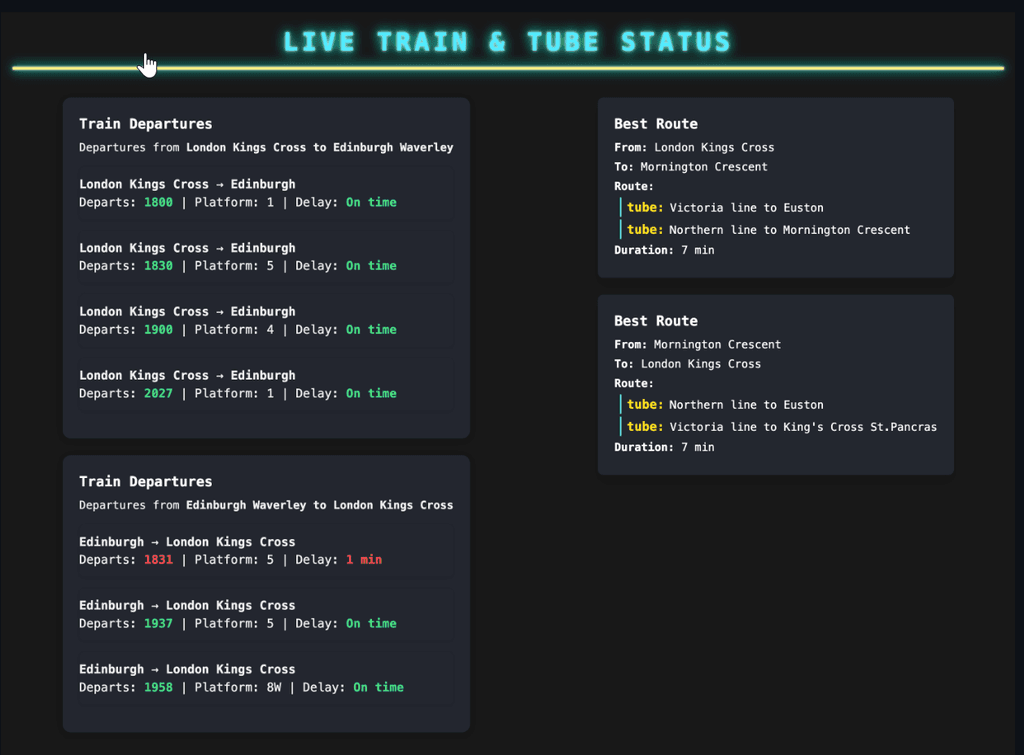

-
Google is flagging Immich sites as dangerous -
qdrant - open-source vector database written in Rust - alternative to Pinecone@marcusquinn made a great application request here. The Qdrant project has become increasingly useful for AI and a lot has happened since the initial request to make the project even better. Here is an ai generated summary:
Summary of New Features and Improvements in Qdrant from v1.1.0 to v1.15.5
Based on the changelog from this GitHub comparison, here's a categorized breakdown of the major updates. Early versions (1.1–1.2) laid the foundation with vector search and HNSW indexing, while later releases added scalability, hybrid search, and performance tweaks. This evolved Qdrant into a robust vector database for AI applications.
Vector Search and AI Features
- Hybrid Search Support: Introduced sparse vectors alongside dense ones (e.g., BM25/TF-IDF generalization for keyword matching in transformer models, starting ~1.3–1.4).
- Recommendation Strategies: New options like
sum_scoresfor relevance feedback and server-side score boosting with custom formulas (v1.14.x). - Local BM25 Inference: Added built-in BM25 scoring (v1.15.x), cutting reliance on external models for text ranking.
Performance and Optimization
- HNSW Graph Improvements: Incremental building on segment merges (v1.14.x), parallel batch searches, and memory optimizations.
- Memory/Disk Management: Better disk cache eviction (v1.14.x), adjustable log buffers, and vector quantization reducing RAM usage by ~97% (since ~1.3).
- SIMD Acceleration: x86-64 and Neon support for faster vector computations (ongoing from ~1.5).
- Async I/O and WAL: Write-ahead logging for data durability and io_uring for max NAS throughput (major in 1.5–1.10).
Storage, Sharding, and Scalability
- Distributed Deployment: Full horizontal scaling with sharding/replication and zero-downtime updates (matured in 1.10–1.15).
- Mutable Map Index: Boosted performance for full-text, integer, and other indexes (v1.15.x).
- On-Disk Storage: Dynamic on-disk vectors with cache controls (replaced deprecated
mmap_thresholdin 1.15.x). - Resharding/Recovery: Improved shard recovery against crashes and aborted resharding for dead replicas (v1.14.x).
Security and Access Control
- JWT/Payload Filters: JWT for read-only access and payload-based filters (deprecated in 1.15; now collection-level ACLs).
- Access Controls: Shift to secure, collection-based permissions (recommended since 1.15).
Web UI and User Experience
- Enhancements: Query auto-completion (v1.14.x) and shard distribution in cluster views (v1.15.x). Debian packages now include web UI (v1.15.x).
Payload and Filtering
- Advanced Filtering: JSON payloads, keyword/full-text matching, numerical/geo ranges, and complex conditions (e.g.,
should,must,must_not). Optimized query planning with payload indexes (steady improvements since ~1.2).
Bug Fixes and Consistency
- Key fixes: Delayed flush wrappers prevent lost index updates (1.14.x); storage issues for nulls/booleans deferred until flush (1.15.x); linear decay range bounds corrections (1.15.x).
- Others: Scroll locks, segment mods, date-time errors in formulas, and corrupt point eviction (across 1.14–1.15).
Deprecations and Removals
- Removed
init_fromfor consistency (use migrations/snapshots; 1.15.x). - Deprecated
max_optimization_threads(1.15.x), Lock API, and payload-based JWT filters. - Deprecated
mmap_thresholdin favor ofon_disk(1.15.x).
Overall, Qdrant went from basic vector search to an enterprise-grade tool emphasizing hybrid search, reliability, and AI integration. Full details in the GitHub link. Let me know if you want more on a specific version or category!
-
Cobalt on Cloudron - save anything from your favorite websites: video, audio, photos or gifs. just paste the link and you’re ready to rock!- Main Page: https://cobalt.tools/
- Git: https://github.com/imputnet/cobalt
- Licence: AGPL v3.0
- Dockerfile: Install: Use cobalt.tools online; or docker run -p 3501:3501 cobalt/cobalt for self-host.
- ? https://github.com/imputnet/cobalt/issues/722
- Demo: https://cobalt.tools/
- Summary: Download videos and watch them offline instead of viewing them on proprietary platforms.
- Notes: large development effort, it works and does so across several platfroms. Docker support might be tricky
- Alternative to / Libhunt link: eg invidious, yt-dlg, yt-dlp, https://tartube.sourceforge.io/ https://www.libhunt.com/r/cobalt
- Screenshots:
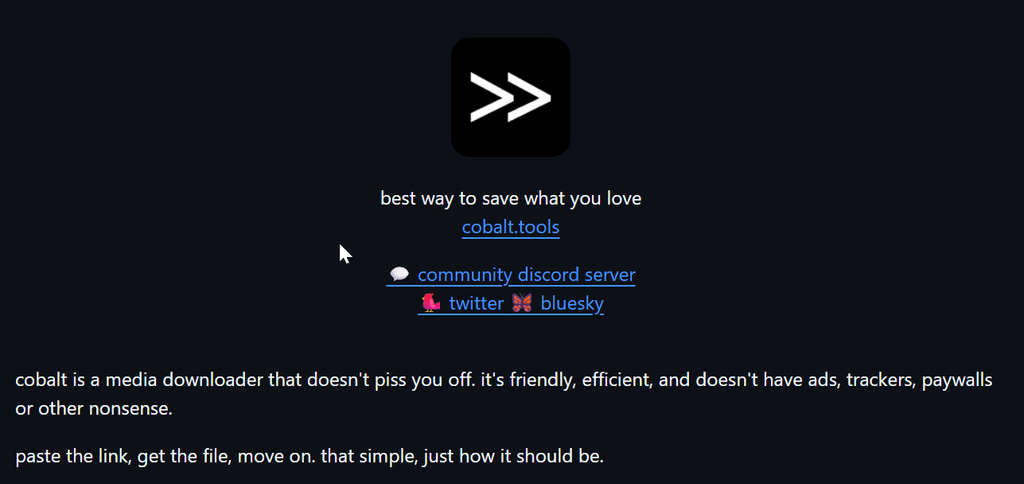
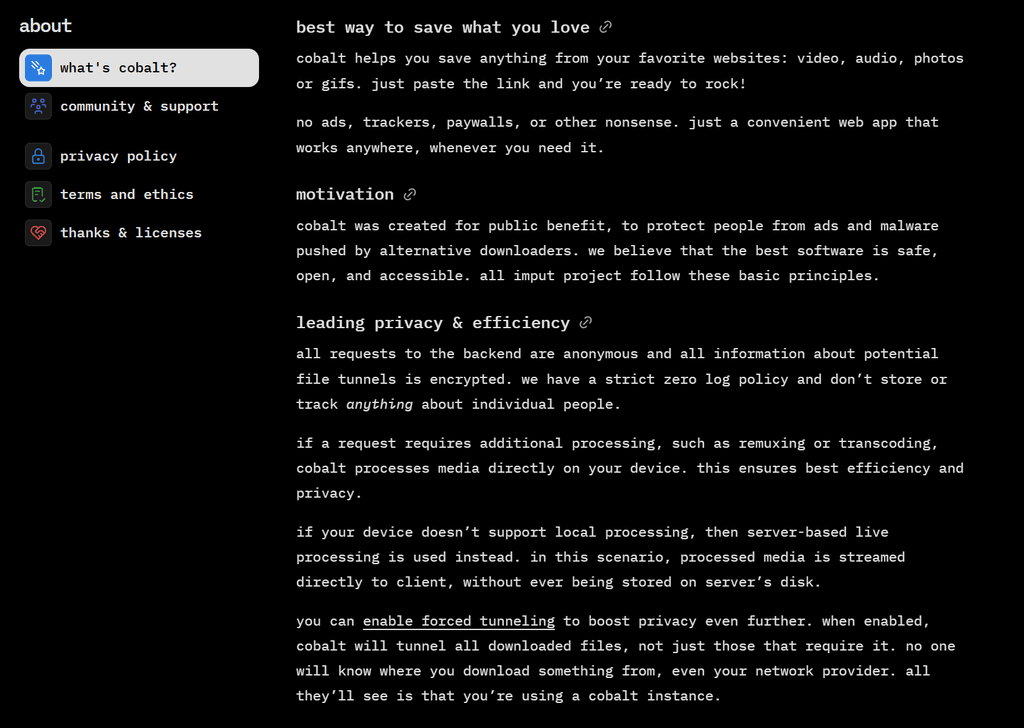

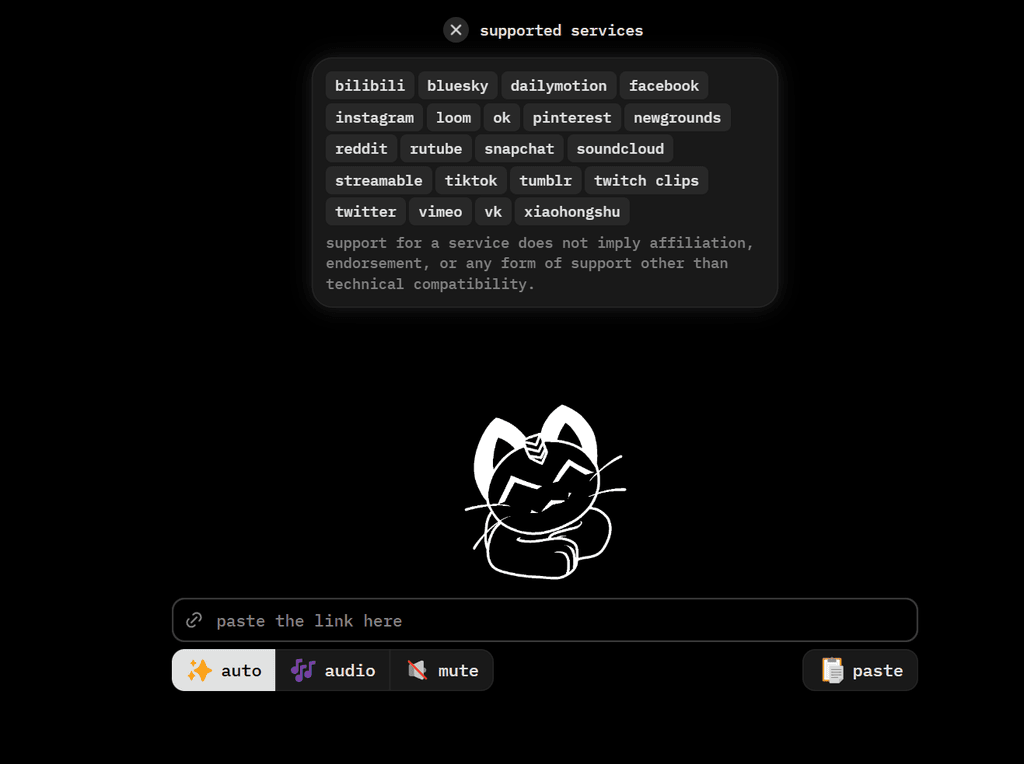
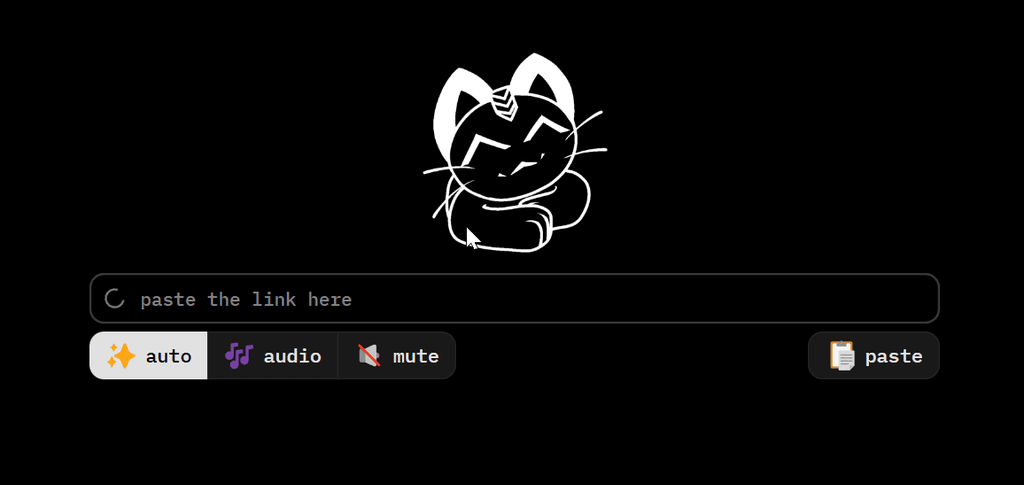
-
Sync updated to v2@nebulon Thanks, we ran into this issue, too. What is it in Cloudron 9 that immich requires?
-
LiteLLM on Cloudron: Simplify model access, spend tracking and fallbacks across 100+ LLMs@marcusquinn Thanks for that. Looks like my post is a duplicate of:
https://forum.cloudron.io/topic/13141/litellm-openrouter-self-hosted-alternative-proxy-provides-access-to-openai-bedrock-anthropic-gemini-etc?_=1759700788590(I posted 3 apps, checked the first one, and then forgot to check if the other two had already been requested!)
@girish What is the procedure to merge this dupe with @jagan 's earlier request here?
I can see the topic tools, merge option, but it is a bit confusing on how to paste/include jagan's thread.

